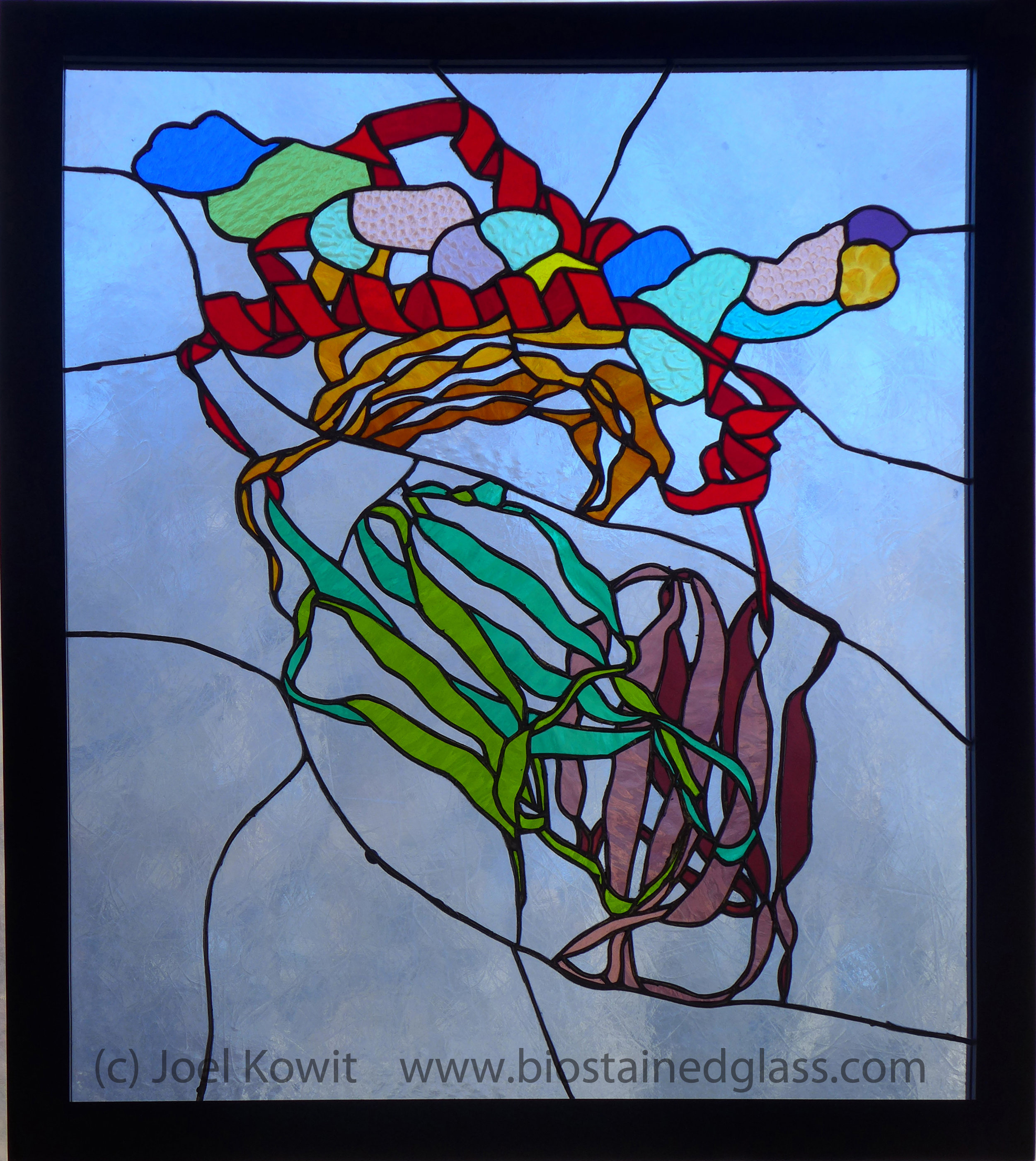Tolerance (HLA DR protein with brain peptide)
2016
Stained glass
32" h x 27" w
"Tolerance" depicts the structure of a class II human MHC ( "major histocompatibility complex" ) protein** - holding a small fragment of another protein (human myelin brain protein.) T cells of the immune system can recognize if these fragments are from a virus or bacterium, and mount an immune response against the infecting microorganism. If the pieces are "self" (as in this example) T cells are usually unresponsive (i.e., "tolerant" to self.) An inappropriate response ("intolerance,") to this self protein may be associated with multiple sclerosis, an autoimmune disease.
The ability of immune cells to distinguish "self" from "non-self" is a property whose basis was described by the "Clonal Selection Theory," a model for which MacFarlane Burnet received the Nobel Prize. T cells (and the other major class of lymphocytes - B cells) are formed as clones - a group of identical cells all derived from a single parent cell. Each clone carries a unique receptor for an "antigen" - typically a portion of a virus, bacterium, or other pathogen, or for a portion of a self protein. During the formation of these cells, any clones which are able to recognize self antigens undergo "suicide." Consequently, only T or B cells which recognize "foreign" pathogens remain, and there is no reaction to self. When this system goes awry, an attack on self (autoimmune disease) may result.
**MHC class II with peptide [1FVL.pdb; HLA-DR2, myelin basic protein peptide]
